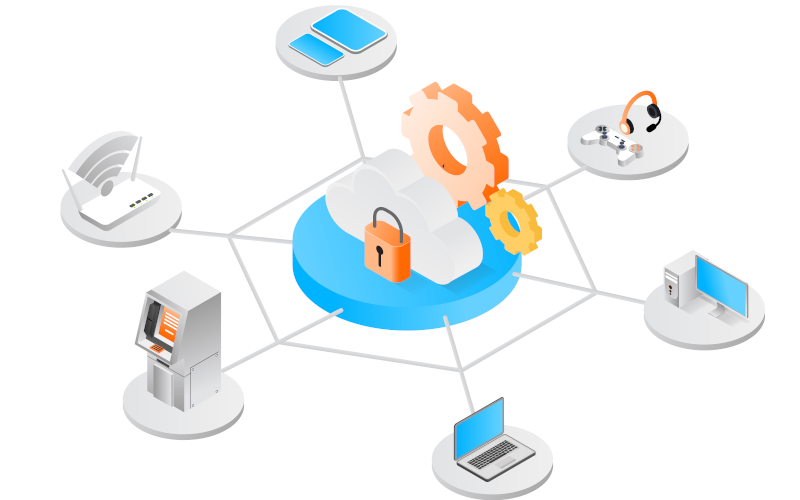
In the industrial world, there are a large number of systems, equipment, networks, areas, ducts, cloud environments, IT-OT environments, etc. In recent years, the number of attacks on industrial environments has been growing exponentially, and not only on purely industrial environments, but also on corporate environments that are connected to industrial environments. These IT environments being access points for attackers due to this IT/OT connectivity.

The security gaps and issues that exist within industrial environments are sometimes unknown to many information consumers. This article aims to bring first hand some of the most interesting issues and attack trends in 2023 in the industrial sector. Different industrial cybersecurity incidents so far this year will be described at a high level and a comparison will be made with the trend presented at the beginning of the year.

OSINT (Open-Source Intelligence) is a technique that focuses on the collection, evaluation and analysis of public information through different methods and techniques, with the objective of discovering vulnerabilities or collecting sensitive information that could become threats.
It should be emphasized that the data collection is not called OSINT, it would be raw information. Once this information is evaluated and treated, it could be said that we are really talking about open-source intelligence (OSINT).
Initially it has been used in the military and government sector. Its use in OT, with disciplines such as SIGINT (Signals Intelligence), IMINT (Imagery Intelligence) or even 'Sock Puppets' (fake profiles or intruders in technical forums) is making havoc due to the criticality of this equipment. Disinformation or the compilation of sensitive industrial technical information are some of the serious consequences that this sector is exposed to.

Firmware analysis can help to uncover potential vulnerabilities that would otherwise never have been discovered.
Although there are multiple types of attacks on IoT and IIoT devices, this guide focuses on the firmware of these devices to check for potential vulnerabilities, using security testing and reverse engineering to allow for an in-depth analysis of the firmware.

The evolution of communications in society is also having an impact on the industrial world. With the arrival of 5G, many industrial companies have considered migrating some of their communications to take advantage of the characteristics of this new mobile communications band, such as the reduction of latency times, the increase in connection speed or the exponential increase in the number of devices that can be connected to the network. These characteristics fit perfectly with the industrial mentality, where there are a multitude of interconnected devices between which there cannot be a communication cut due to the criticality of the processes they implement.
This article aims to comment, in addition to all the advantages that 5G provides to the industry, the different uses that can be given currently and the complexity of implementing these communications in some devices for subsequent deployment in the industry. Also, to specify possible vulnerabilities in communications using 5G networks.

When a security incident occurs in an ICS (Industrial Control System), depending on its severity, it can generate a serious problem, both at a productive and economic level, as well as in the security of the people working in the industrial system.
Therefore, in this first article of a series on this subject, we will explain precisely the recovery plans, some general guidelines for their development and some conclusions on the use and applicability of these plans.

IDSs are passive elements that are in our network to ensure its security, but what would happen if all our communications were encrypted, or would this protection measure be enough to ensure that my network is protected? These questions and more will be discussed in the following article to provide solutions and advice focused on industrial environments.

Confrontations between countries no longer only take place in the physical world, in this new decade, these confrontations also move to the cyber world. The conflict between Russia and Ukraine is one of the clearest examples. Among the events that have taken place is the security incident known as Industroyer2, which affected an electrical supplier in Ukraine. The Industroyer2 is the evolution of its predecessor, the malware known as Industroyer, which was able to affect multiple protocols of industrial control systems during its execution. This new variant of the malware focuses on a particular communications protocol, IEC-104, which is widely used in Europe and the Middle East to monitor and control the power system via the TCP/IP communications protocol.

The programming of PLCs is a fundamental part of the initial phases when building and designing industrial plants. About that environment, the company will base all its operations in that environment making the configuration of these controllers a critical element. When it comes to programming these devices there are a series of steps and best practices that take advantage of the native functionalities available and that involve little or no need to resort to a PLC programmer, protecting the device in a simple way with minimum spend on resource.

Organisations are exposed to the consequences of cyber threats, and may be ill-prepared to face and manage cyber incidents, whether provoked or unprovoked. For this reason, in 2014 INCIBE launched its Indicators for the Improvement of Cyber Resilience (IMC) model, with the aim of improving and understanding the state of cyber resilience in organisations.



